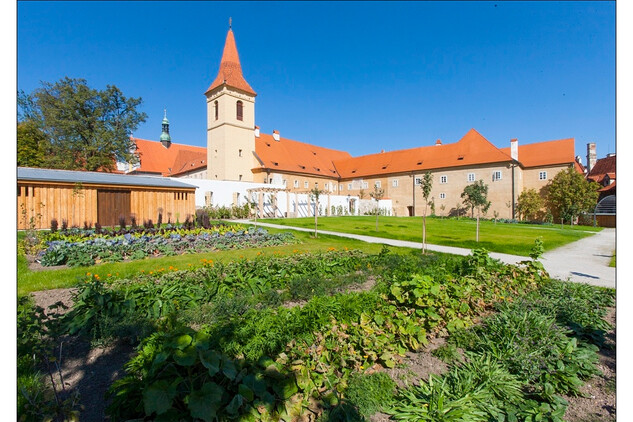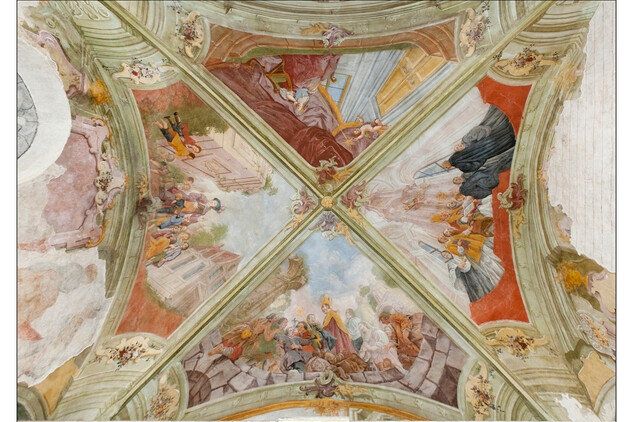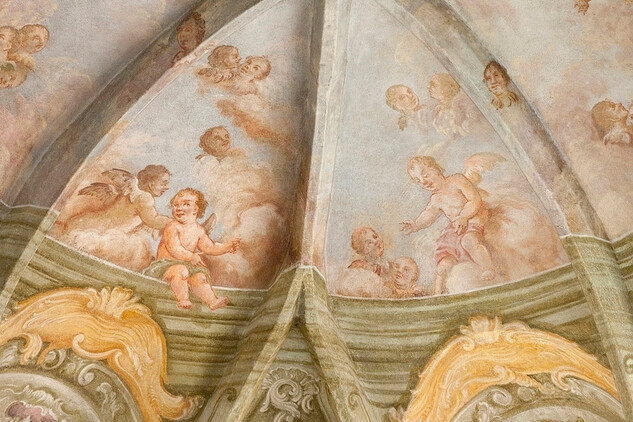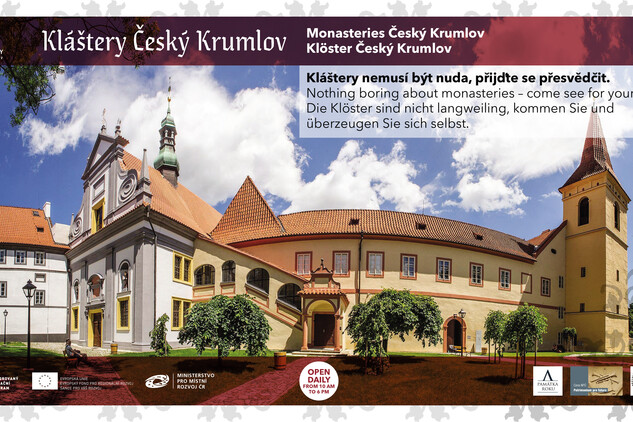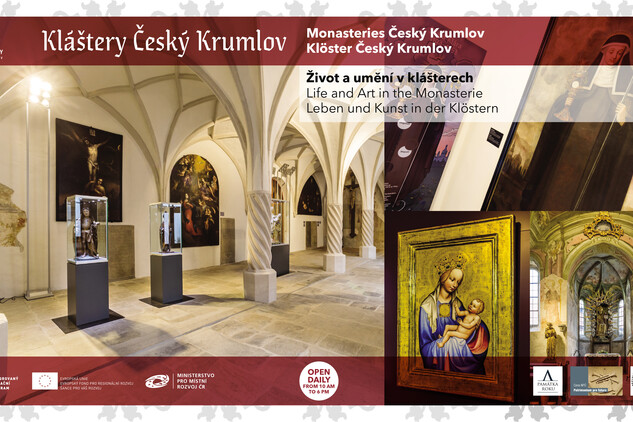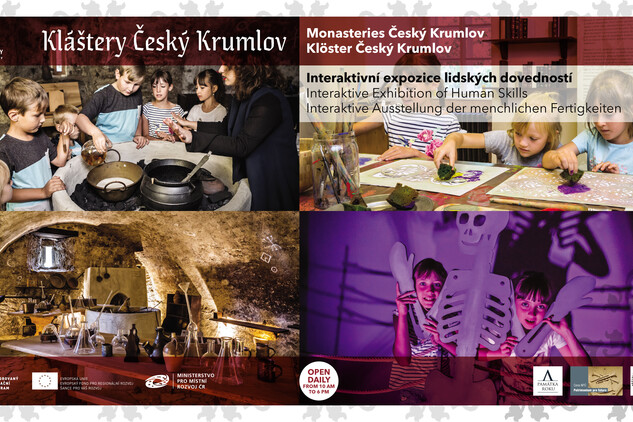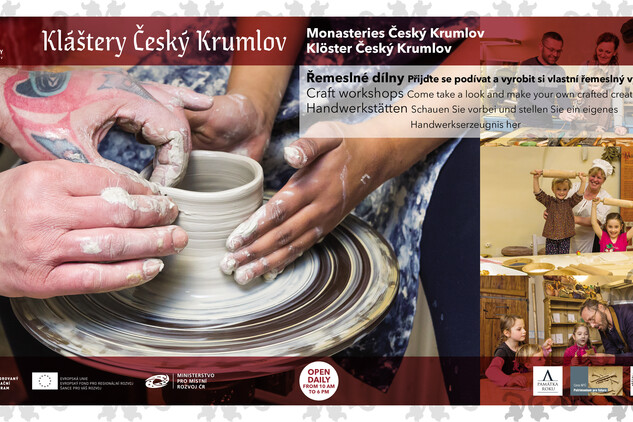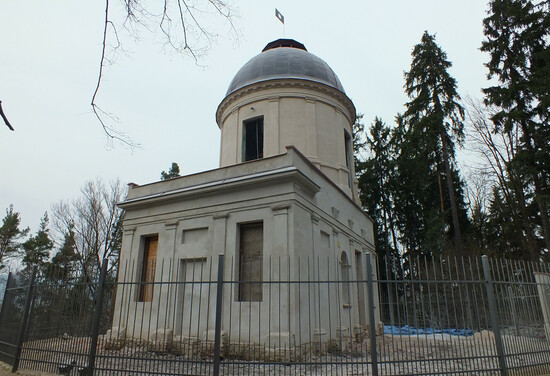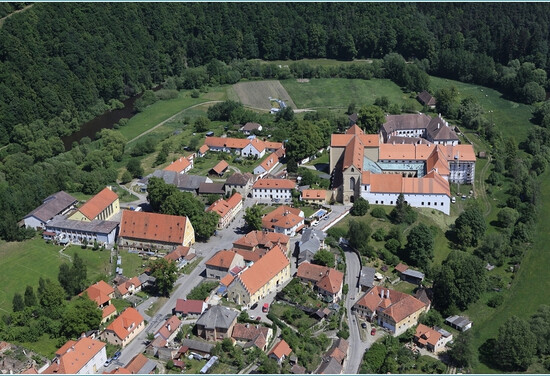- Physical difficulty: Easy
- Length: up to 2 min
- Refreshments: Oddychové centrum, Kláštery Český Krumlov
- Wheelchair accessibility: Yes
Český Krumlov Monasteries

The large complex of the Monastery of the Order of the Knights of the Cross with a Red Star (originally a monastery of Minorites and Clares) was founded by the noble Rosenberg family in 1350. Today, in the buildings of the former monasteries, you will find museum expositions, community halls and gardens that are open to the public.
The large complex of medieval monasteries was founded in 1350 at the initiative of the Krumlov ruler Petr I. of Rosenberg and his wife Kateřina as a common monastery of Minorites and Clare nuns, with a common church. From the end of the 14th century, the complex also included a house for pious laic women, called "beguines". The stay of the Clare nuns was brought to an end by reforms of Emperor Josef II. in 1785, but the Minorites stayed in the monastery until as late 1950.
The monastery area is entered through a gate with the coat-of-arms of the Knights of the Cross, behind which a small park called Tramín is situated. The interior of the church is an unique gallery of the Baroque church arts.
The southern part of the church is adjoined by monastery buildings. Their most important part is the cloister from around 1500. It is vaulted by a tracery vault and its northern wing is made up by a unique two-nave space divided by spiralled columns. In the middle of the western wing is the entrance to St. Wolfgang´s Chapel, consecrated in 1491. There are preserved partly Gothic wall and partly Baroque paintings from 1781 presenting scenes from St. Wolfgang´s life.

